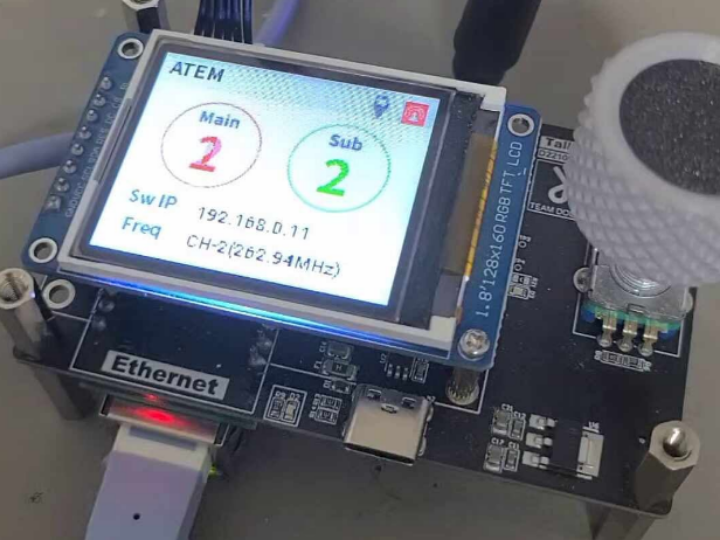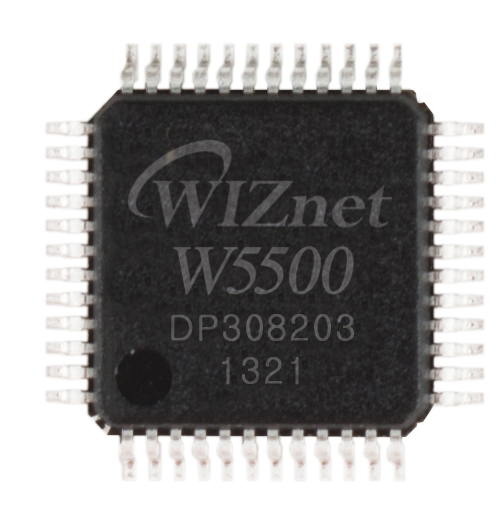A Wireless Tally System Development Project -무선탈리 만들기(완)-
A developer built a wireless tally system to overcome the limitations of wired setups.

In-depth Analysis: A Wireless Tally System Development Project
This article synthesizes and analyzes a detailed blog series by a developer on a wireless tally system project. The project is an excellent case study on overcoming the limitations of wired tally systems, providing insights into hardware selection, communication protocol decisions, and real-world field testing.
1. What is a Tally System?
A tally system is a crucial piece of equipment in video production and broadcasting. It uses a signal to indicate which camera is currently live ("on-air") and which is in a preview state. Typically, a red light signifies the camera is live, and a green light indicates it's ready to go live. This simple visual cue helps camera operators and on-screen talent know the status of their camera, preventing mistakes and ensuring a smooth production.
However, traditional tally systems use cables, which limit mobility and complicate setup in a live-shooting environment. This project aimed to solve this issue by developing a wireless tally system that enhances portability and convenience. A key goal was to achieve the high communication stability required for professional broadcasting.
2. Technical Choices: Deliberation and Decisions
Throughout the project, the developer faced critical technical choices. The thought process and final decisions are outlined below.
Communication Method: ESP-NOW vs. Wi-Fi
Deliberation: The developer initially considered ESP-NOW, a low-power communication protocol for ESP32. While it offers fast communication and low power consumption, it can be unstable for one-to-many broadcasting, which is essential for controlling multiple tally lights.
Conclusion: Wi-Fi was ultimately chosen for its ability to provide reliable one-to-many communication, which was deemed more critical than the power-saving benefits of ESP-NOW.
Main MCU: STM32 vs. ESP32
Deliberation: Initially, the developer considered the STM32 for its higher performance. However, integrating Wi-Fi connectivity with the STM32 would have added significant complexity to the hardware and firmware development.
Conclusion: The ESP32 was ultimately selected. Its built-in Wi-Fi and Bluetooth capabilities simplified the hardware design and accelerated the development process.
PC Connectivity: USB to TTL vs. Ethernet
Deliberation: Using a USB to TTL module was an initial thought for PC communication, but this failed to address the fundamental problem of using a cable and limited interoperability with other devices.
Conclusion: Ethernet communication was adopted for its versatility and stability. The WIZnet W5500 module was chosen to implement this.
3. Key Technology Analysis: WIZnet W5500 and VMIX Integration
The core of this project lies in the WIZnet W5500 Ethernet module and its integration with VMIX software.
The Role of the WIZnet W5500: While the tally lights communicate wirelessly via Wi-Fi, the controller is connected to a PC running VMIX via a wired Ethernet connection. The W5500 features a hardware TCP/IP stack, which offloads the complex network processing from the main microcontroller. This ensures stable and high-speed data transfer, a crucial requirement for real-time broadcast environments where communication must be uninterrupted.
VMIX Integration: VMIX is a live video mixing software used to switch between multiple camera feeds and manage graphics in real time for broadcasting. The developer created a program that uses the VMIX API to retrieve live camera status, transmitting this data to the controller via Ethernet. This integration ensures the wireless tally system is perfectly synchronized with the live broadcast environment.
4. Project Completion: The Importance of Field Testing
Beyond development and bench testing, the project's reliability was validated through real-world field testing.
Communication Stability Test: The developer tested the wireless communication range and signal stability between the tally lights and the controller in an environment similar to a real shooting set, with obstructions and distance.
Hardware Optimization: The tests also helped in optimizing the hardware, leading to improvements like the use of detachable batteries to ensure sufficient operating time in the field.
This crucial field-testing phase transformed the system from a working prototype into a reliable, production-ready product fit for actual use.
5. Conclusion and Implications
This wireless tally system project is an excellent example of a well-executed engineering process, demonstrating a logical approach to technical challenges. The decision to use wired communication with the WIZnet W5500 for the core controller—even within a "wireless" system—to ensure stability is a particularly insightful design choice. The developer's journey, from initial deliberation to final implementation, provides a valuable roadmap for anyone looking to undertake a similar project.


